Posted on November 20th, 2010 by ASEE
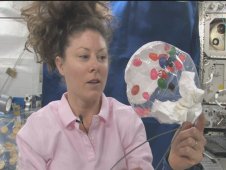 NASA’s “Kids in Micro-g” student experiment design challenge for grades 5-8, is aimed at giving students a hands-on opportunity to design an experiment or simple demonstration that could be performed both in the classroom and by astronauts aboard the International Space Station.
NASA’s “Kids in Micro-g” student experiment design challenge for grades 5-8, is aimed at giving students a hands-on opportunity to design an experiment or simple demonstration that could be performed both in the classroom and by astronauts aboard the International Space Station.
Read More
Filed under: K-12 Outreach Programs | 1 Comment »
Tags: Aerospace, Competitions for Students, Experiments, International Space Station, NASA
Posted on September 27th, 2010 by ASEE
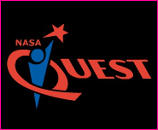 The NASA Quest Website offers a range of online resources for teachers, students, parents, and others, so that the public can share the excitement of NASA’s authentic scientific and engineering pursuits, like flying in the Shuttle and the International Space Station, exploring distant planets with spacecraft, and building the aircraft of the future.
The NASA Quest Website offers a range of online resources for teachers, students, parents, and others, so that the public can share the excitement of NASA’s authentic scientific and engineering pursuits, like flying in the Shuttle and the International Space Station, exploring distant planets with spacecraft, and building the aircraft of the future.
Read More
Filed under: Web Resources | Comments Off on Website: NASA Quest
Tags: Aeronautics, Aerospace, Class Activities, Internet Resources, Lesson Plans, NASA, Web Resources
Posted on August 16th, 2010 by ASEE
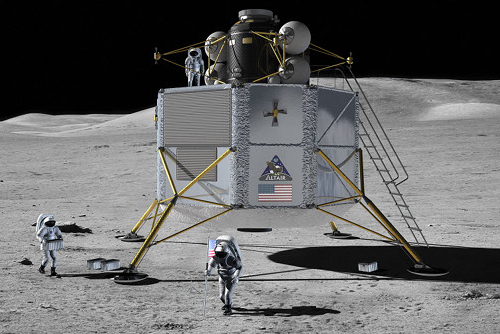
In this lesson, students assume the role of NASA aerospace engineers, following the engineering design process to learn the steps for designing, creating, and improving equipment. They design and build a shock-absorbing system that will protect two “astronauts” when they land, and come to understand some of the challenges of lunar landings.
Read More
Filed under: Grades 6-8, Grades K-5, Lesson Plans | 3 Comments »
Tags: Aerospace, Aerospace Engineering, Engineering Design Process, Grades 3-8, NASA
Posted on August 16th, 2010 by ASEE
 Astrobiology Magazine is a NASA-sponsored online popular science magazine, with stories that profile current exciting news across the wide, interdisciplinary field of astrobiology — the study of life in the universe. The magazine publishes new stories daily, and, in addition to a large article archive, offers a catalogue of podcasts, notes from the field, blogs, and other types of multimedia.
Astrobiology Magazine is a NASA-sponsored online popular science magazine, with stories that profile current exciting news across the wide, interdisciplinary field of astrobiology — the study of life in the universe. The magazine publishes new stories daily, and, in addition to a large article archive, offers a catalogue of podcasts, notes from the field, blogs, and other types of multimedia.
Read More
Filed under: For Teachers, Grades 6-8, Grades 9-12, Grades K-5, Web Resources | Comments Off on Online Magazine: Astrobiology Magazine
Tags: Aerospace, Aerospace Engineering, Astrobiology, Fusion and Astrophysics, International Space Station
Posted on July 14th, 2010 by ASEE
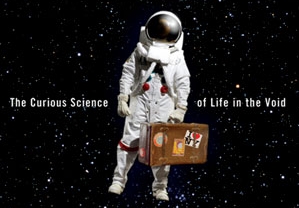 Author Mary Roach speaks at an evening lecture at the Smithsonian Institution in Washington, D.C. on Wed., Aug. 4, to discuss her new book Packing for Mars: The Curious Science of Life in the Void. She describes how astronauts prepare for and endure their trips to space, what happens when you don’t walk on the ground for a year, and the overall experience of space simulations. Cost: $25 Gen. Admission, $15 Member. Program Ended.
Author Mary Roach speaks at an evening lecture at the Smithsonian Institution in Washington, D.C. on Wed., Aug. 4, to discuss her new book Packing for Mars: The Curious Science of Life in the Void. She describes how astronauts prepare for and endure their trips to space, what happens when you don’t walk on the ground for a year, and the overall experience of space simulations. Cost: $25 Gen. Admission, $15 Member. Program Ended.
Read More
Filed under: For Teachers, Grades 6-8, Grades 9-12, K-12 Outreach Programs | Comments Off on Event: A Visit to Mars, August 4, 2010. Washington, DC
Tags: Aerospace, Astronautics, Programs for Families, Smithsonian Institution, Summer Camps & Programs (Students), Summer Programs (Students), Summer Programs (Teachers)
Posted on May 27th, 2010 by Jaimie Schock
 NASA is launching a new robotic mission to Jupiter in 2011. Classrooms are invited to join NASA/JPL engineer Tracy Drain as she discusses why NASA is sending the Juno spacecraft to Jupiter, how it will get there, and what it will study. The conversation will be geared to students in grades 6 through 8. The live web chat on June 3, 2010, at 1:00 p.m. Eastern/10 a.m. Pacific, can be watched online.
NASA is launching a new robotic mission to Jupiter in 2011. Classrooms are invited to join NASA/JPL engineer Tracy Drain as she discusses why NASA is sending the Juno spacecraft to Jupiter, how it will get there, and what it will study. The conversation will be geared to students in grades 6 through 8. The live web chat on June 3, 2010, at 1:00 p.m. Eastern/10 a.m. Pacific, can be watched online.
Read More
Filed under: Grades 6-8, K-12 Outreach Programs | Comments Off on Event: Mission to Jupiter Live Chat
Tags: Aeronautics, Aerospace, Grades 6-8, Live Web Chat, NASA
Posted on May 24th, 2010 by Jaimie Schock
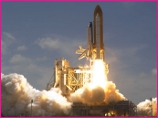 Chuck Lostroscio, a NASA software engineer, has reconfigured the simulation software NASA used to train Space Shuttle astronauts and created a computer game-like tool to help students learn how they might one day apply their math, science and engineering lessons. It’s called the Kennedy Launch Academy Simulation System, or KLASS, and it requires students to play a mission control engineer for a simulated shuttle launch.
Chuck Lostroscio, a NASA software engineer, has reconfigured the simulation software NASA used to train Space Shuttle astronauts and created a computer game-like tool to help students learn how they might one day apply their math, science and engineering lessons. It’s called the Kennedy Launch Academy Simulation System, or KLASS, and it requires students to play a mission control engineer for a simulated shuttle launch.
Read More
Filed under: K-12 Education News, Web Resources | Comments Off on KLASS Act: A NASA Simulation
Tags: Aerospace, NASA, Software, Web Resources
Posted on May 11th, 2010 by ASEE
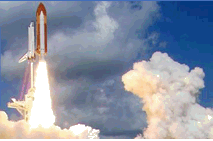
Based on the actual software currently used for training at its Launch Control Center, NASA’s downloadable Kennedy Launch Academy Simulation System Software (KLASS) enables a launch countdown simulation with a networked system of computers. The supporting KLASS Curriculum is a series of STEM lesson plans for students grades 6-10 with interactive resources that build to a simulated shuttle launch.
Read More
Filed under: Web Resources | Comments Off on Web Resource: NASA Simulation Launch Software
Tags: Aerospace, Aerospace Engineering, Grades 6-10, NASA, Science Curriculum, Software
Posted on April 29th, 2010 by ASEE
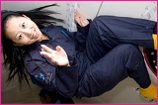 The Northrop Grumman Foundation Weightless Flights of Discovery program provides public Middle School teachers of STEM subjects the opportunity to join teacher workshops and parabolic flights in locations throughout the country.Teachers learn about the physics of weightlessness, design microgravity experiments, and experience a weightless flight. Teachers then use their videotaped flight experience and the results of the experiments to help shape math, science, technology or engineering curricula at their home schools.
The Northrop Grumman Foundation Weightless Flights of Discovery program provides public Middle School teachers of STEM subjects the opportunity to join teacher workshops and parabolic flights in locations throughout the country.Teachers learn about the physics of weightlessness, design microgravity experiments, and experience a weightless flight. Teachers then use their videotaped flight experience and the results of the experiments to help shape math, science, technology or engineering curricula at their home schools.
Read More
Filed under: For Teachers, K-12 Outreach Programs | 1 Comment »
Tags: Aerospace, Corporations, Programs for Teachers
 NASA’s “Kids in Micro-g” student experiment design challenge for grades 5-8, is aimed at giving students a hands-on opportunity to design an experiment or simple demonstration that could be performed both in the classroom and by astronauts aboard the International Space Station.
NASA’s “Kids in Micro-g” student experiment design challenge for grades 5-8, is aimed at giving students a hands-on opportunity to design an experiment or simple demonstration that could be performed both in the classroom and by astronauts aboard the International Space Station.








 The NASA Quest Website offers a range of online resources for teachers, students, parents, and others, so that the public can share the excitement of NASA’s authentic scientific and engineering pursuits, like flying in the Shuttle and the International Space Station, exploring distant planets with spacecraft, and building the aircraft of the future.
The NASA Quest Website offers a range of online resources for teachers, students, parents, and others, so that the public can share the excitement of NASA’s authentic scientific and engineering pursuits, like flying in the Shuttle and the International Space Station, exploring distant planets with spacecraft, and building the aircraft of the future.
 Astrobiology Magazine is a NASA-sponsored online popular science magazine, with stories that profile current exciting news across the wide, interdisciplinary field of astrobiology — the study of life in the universe. The magazine publishes new stories daily, and, in addition to a large article archive, offers a catalogue of podcasts, notes from the field, blogs, and other types of multimedia.
Astrobiology Magazine is a NASA-sponsored online popular science magazine, with stories that profile current exciting news across the wide, interdisciplinary field of astrobiology — the study of life in the universe. The magazine publishes new stories daily, and, in addition to a large article archive, offers a catalogue of podcasts, notes from the field, blogs, and other types of multimedia. Author Mary Roach speaks at an evening lecture at the Smithsonian Institution in Washington, D.C. on Wed., Aug. 4, to discuss her new book Packing for Mars: The Curious Science of Life in the Void. She describes how astronauts prepare for and endure their trips to space, what happens when you don’t walk on the ground for a year, and the overall experience of space simulations. Cost: $25 Gen. Admission, $15 Member. Program Ended.
Author Mary Roach speaks at an evening lecture at the Smithsonian Institution in Washington, D.C. on Wed., Aug. 4, to discuss her new book Packing for Mars: The Curious Science of Life in the Void. She describes how astronauts prepare for and endure their trips to space, what happens when you don’t walk on the ground for a year, and the overall experience of space simulations. Cost: $25 Gen. Admission, $15 Member. Program Ended. NASA is launching a new robotic mission to Jupiter in 2011. Classrooms are invited to join NASA/JPL engineer Tracy Drain as she discusses why NASA is sending the Juno spacecraft to Jupiter, how it will get there, and what it will study. The conversation will be geared to students in grades 6 through 8. The live web chat on June 3, 2010, at 1:00 p.m. Eastern/10 a.m. Pacific, can be watched
NASA is launching a new robotic mission to Jupiter in 2011. Classrooms are invited to join NASA/JPL engineer Tracy Drain as she discusses why NASA is sending the Juno spacecraft to Jupiter, how it will get there, and what it will study. The conversation will be geared to students in grades 6 through 8. The live web chat on June 3, 2010, at 1:00 p.m. Eastern/10 a.m. Pacific, can be watched  Chuck Lostroscio, a NASA software engineer, has reconfigured the simulation software NASA used to train Space Shuttle astronauts and created a computer game-like tool to help students learn how they might one day apply their math, science and engineering lessons. It’s called the Kennedy Launch Academy Simulation System, or KLASS, and it requires students to play a mission control engineer for a simulated shuttle launch.
Chuck Lostroscio, a NASA software engineer, has reconfigured the simulation software NASA used to train Space Shuttle astronauts and created a computer game-like tool to help students learn how they might one day apply their math, science and engineering lessons. It’s called the Kennedy Launch Academy Simulation System, or KLASS, and it requires students to play a mission control engineer for a simulated shuttle launch.
 The Northrop Grumman Foundation Weightless Flights of Discovery program provides public Middle School teachers of STEM subjects the opportunity to join teacher workshops and parabolic flights in locations throughout the country.Teachers learn about the physics of weightlessness, design microgravity experiments, and experience a weightless flight. Teachers then use their videotaped flight experience and the results of the experiments to help shape math, science, technology or engineering curricula at their home schools.
The Northrop Grumman Foundation Weightless Flights of Discovery program provides public Middle School teachers of STEM subjects the opportunity to join teacher workshops and parabolic flights in locations throughout the country.Teachers learn about the physics of weightlessness, design microgravity experiments, and experience a weightless flight. Teachers then use their videotaped flight experience and the results of the experiments to help shape math, science, technology or engineering curricula at their home schools.